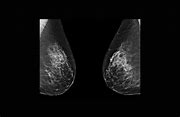Breast cancer screening is a topic that concerns many women worldwide. It’s a crucial aspect of healthcare, as early detection can significantly impact treatment outcomes and survival rates. However, the effectiveness of traditional screening methods, like mammograms, may be limited in women with dense breast tissue. This has sparked discussions and research on the need for supplemental imaging techniques to improve early detection in this population.
The Importance of Supplemental Imaging
Women with dense breasts have a higher risk of developing breast cancer and are more likely to have their cancer missed on a mammogram. The challenge lies in distinguishing between healthy dense breast tissue and potentially cancerous masses on the images produced by mammography.
Expert Insights
Dr. Smith, a renowned oncologist, explains, “Supplemental imaging modalities such as ultrasound or MRI can aid in detecting cancers that may be hidden on mammograms due to breast density. While these additional tests increase costs and may lead to false positives, they also offer valuable information that can help save lives.”
Storytelling Approach
Imagine Sarah, a 45-year-old woman with dense breasts who undergoes her annual mammogram. The results come back inconclusive due to the density of her breast tissue. Sarah’s healthcare provider recommends supplemental imaging to get a clearer picture of her breast health.
As Sarah goes through additional screenings, she experiences moments of anxiety and uncertainty while waiting for results. Finally, the supplemental imaging reveals a small mass that was not visible on the mammogram. Thanks to early detection through these advanced techniques, Sarah’s treatment is initiated promptly, leading to a successful outcome.
Challenges and Considerations
Implementing supplemental imaging for women with dense breasts presents challenges such as increased financial burden, longer appointment times, and the possibility of unnecessary biopsies resulting from false positives. Healthcare providers must carefully weigh these factors against the potential benefits of improved early detection.
Looking Ahead
Research continues in the field of breast cancer screening to enhance existing methods and develop innovative approaches tailored to individual risk profiles. By staying informed about advancements in technology and medical guidelines regarding supplemental imaging for dense breasts, both healthcare providers and patients can work together towards proactive breast health management.
In conclusion,
the exploration of supplemental imaging options for women with dense breasts marks an important step forward in improving early detection rates and ultimately saving more lives from breast cancer.

